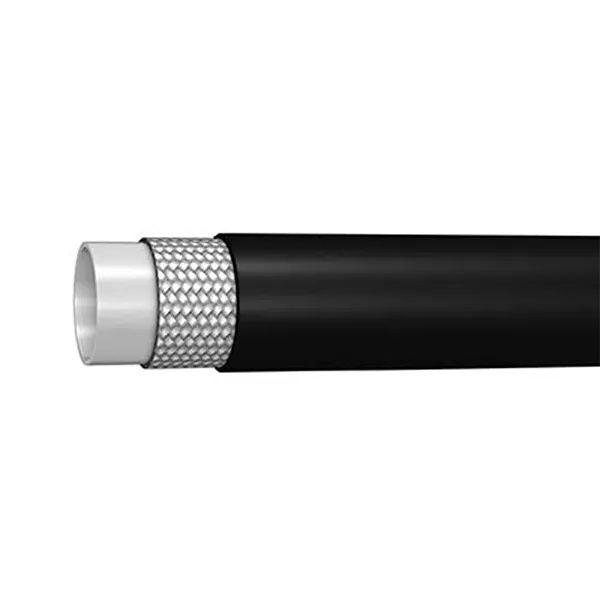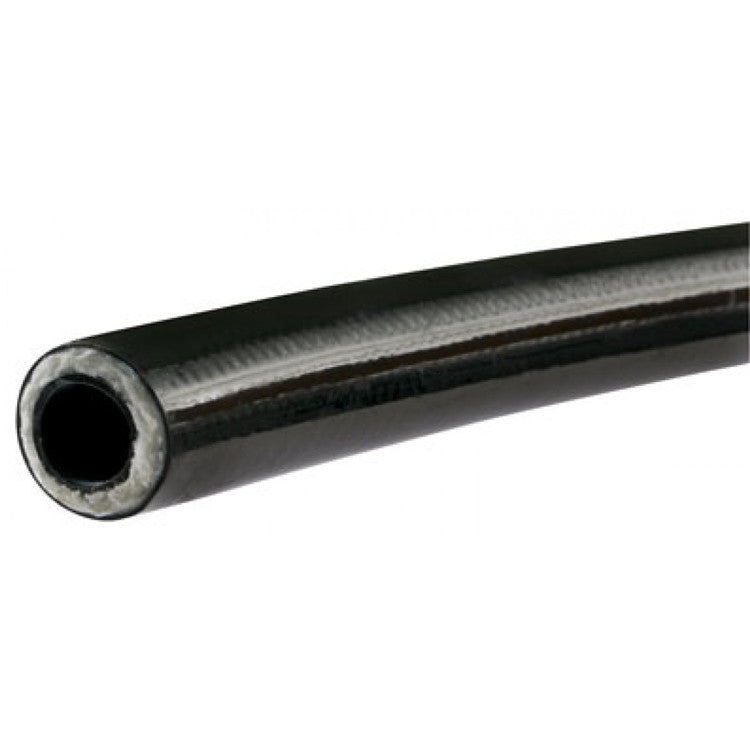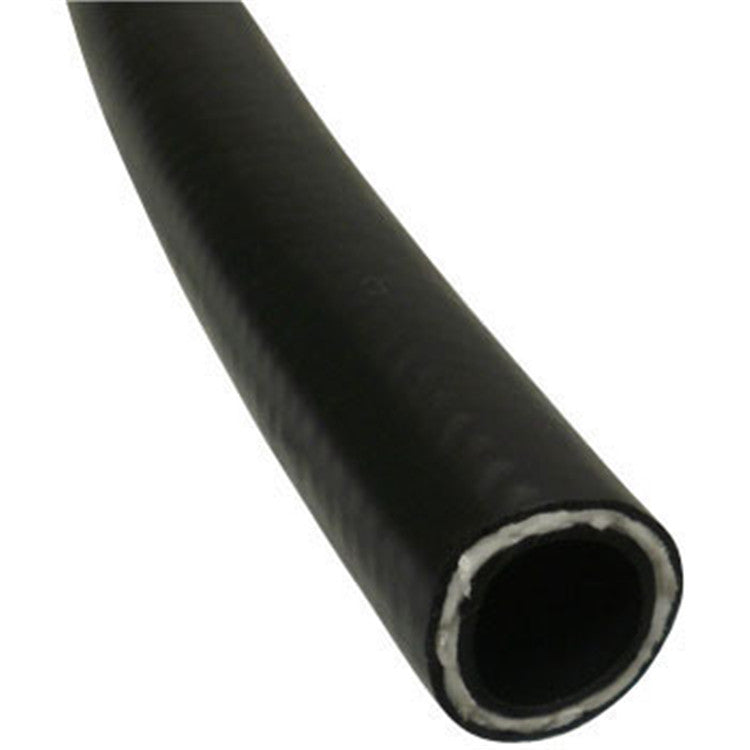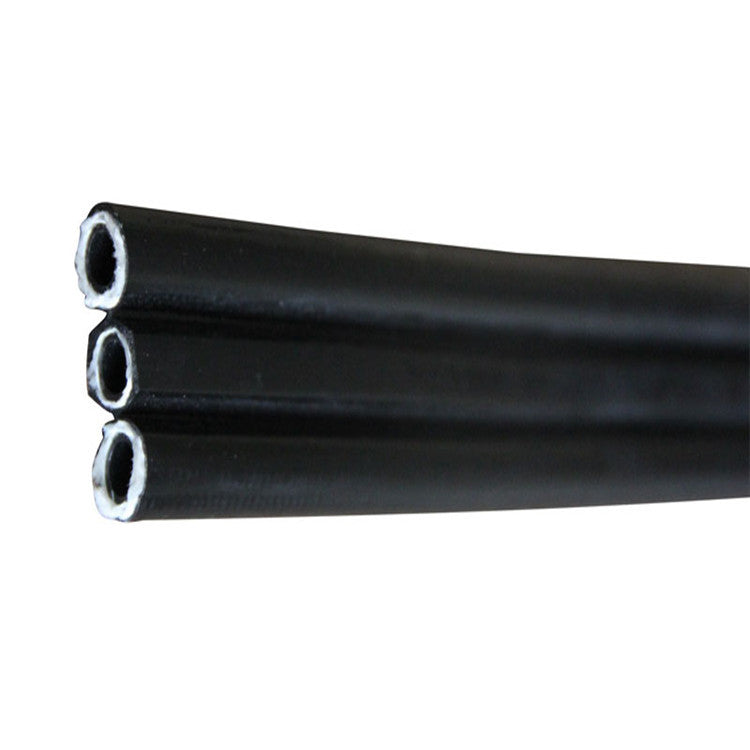TIAN LI HYDRAULIC EUROPE SP. Z O.O.
TL-FLEX-R7 SAE 100R7 Hydraulic Hose Thermoplastic elastomer,One high-tensile textile wire braid
TL-FLEX-R7 SAE 100R7 Hydraulic Hose Thermoplastic elastomer,One high-tensile textile wire braid
Couldn't load pickup availability
TL-FLEX-R7 SAE 100R7 Hydraulic Hose Thermoplastic elastomer, One high-tensile textile wire braid
Outer Cover: Polyurethane Temperature Range -40°C to +100°C
|
DN |
Inch |
Inside |
Outside |
Working- pressure |
Burst- pressure |
Bend Radius |
||
|
mm |
inch |
dash |
mm |
mm |
bar |
psi |
bar |
mm |
|
3 |
1/8 |
-2 |
3.2 |
8.5 |
300 |
4350 |
1200 |
80 |
|
5 |
3/16 |
-3 |
4.8 |
10.8 |
345 |
5000 |
1379 |
90 |
|
6.3 |
1/4 |
-4 |
6.4 |
13.0 |
345 |
5000 |
1379 |
100 |
|
8 |
5/16 |
-5 |
7.9 |
15.1 |
300 |
4350 |
1200 |
115 |
|
10 |
3/8 |
-6 |
9.5 |
17.0 |
276 |
4000 |
1103 |
125 |
|
12.5 |
1/2 |
-8 |
12.7 |
20.7 |
245 |
3490 |
965 |
180 |
|
16 |
5/8 |
-10 |
15.9 |
23.0 |
192 |
2780 |
768 |
205 |
|
19 |
3/4 |
-12 |
18.9 |
26.0 |
157 |
2270 |
630 |
240 |
|
25 |
1 |
-16 |
25.4 |
32 |
140 |
2030 |
560 |
300 |
Thermoplastic Hose R7 Application
Medium pressure Hydraulic lines 70 to 210 bar. Suitable for hydraulic application with increased resistance to abrasion. For use with petroleum, synthetic or water based fluids in hydraulic systems. Suitable for Agricultural machinery, Earthmoving, Articulating & Telescopic booms and Material handling equipments. Also suitable for industrial gases and other applications.
General Information
Thermoplastic hose is common in both – mobile and industrial equipment. You can use them in medium-to-high pressure hydraulic applications. Related products are often specified for handling compressed air and other gases, transporting chemicals, and in water-cleaning and paint-spray operations.
Like its rubber counterpart, thermoplastic hydraulic hose typically has an inner tube, one or more layers of reinforcement, and a protective cover. Where they differ, as the name implies, is in the materials of construction.
Thermoplastic hose also generally has one or two reinforcing layers that provide needed strength and adequate pressure-holding ability. Furthermore the reinforcement layers usually have a braided construction, made from materials like polyester, polyamide or aramid fibers, or steel wire.
Benefits
For users, thermoplastic hose offers a number of benefits over rubber hydraulic hose. As mentioned above, these products can easily handle extreme temperatures and environmental attack that would prematurely degrade rubber hoses.
The tube typically has a smooth internal surface that permits highly efficient flow and reduces flow losses. It also tends to offer low expansion even at maximum working pressure. And the plastic tube resists erosion, which helps maintain overall system cleanliness. Another benefit is that during the production process, thermoplastic hose has a self-supporting inner tube that is cured without a mandrel. (In contrast, rubber hose factories manufacture on an internal mandrel that provides support and maintains tube dimensions during processing, and it must be subsequently removed.) Therefore, we producers can make thermoplastic in extremely long lengths. Some special offshore applications take advantage of continuous hose in lengths of up to 8,000 meters.
Share








